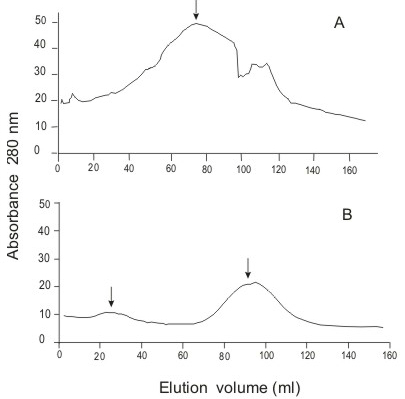Aurelia aurita is a scyphozoan, abundant in the Mexican Caribbean during summer. Although usually innocuous, there is evidence of it causing harm to humans. This work investigates the biological activities of crude and fractionated extracts of A. aurita. Live specimens were collected between July and September 1999 from the Mexican Caribbean. The tentacular margin was dissected immediately and frozen at -50ºC. A nematocyst suspension was prepared, discharged, and the supernatants lyophilized. Hemolytic assay was performed with lyophilized crude extract on bovine, sheep, and human red blood cells. Erythrocyte sensitivity to the toxin was ranked in descending order: human, sheep, and bovine. Toxic activity on Artemia nauplii was evaluated using the same crude extract for different exposure periods (3, 5, and 10 hours); only 48 and 72 hour old Artemia nauplii showed 50% mortality. Partial toxin purification was completed by sequential liquid chromatography using three gels (Sephadex G-200, DEAE Sephadex A-50, and Sephadex G-100). Intramuscular neuroactivity was detected in the crab Ocypode quadrata for two partially purified fractions. These fractions were found to have molecular weight components of 66 and 45 kDa, respectively.
Aurelia aurita; sting; hemolytic activity; crustacean lethality; venom





